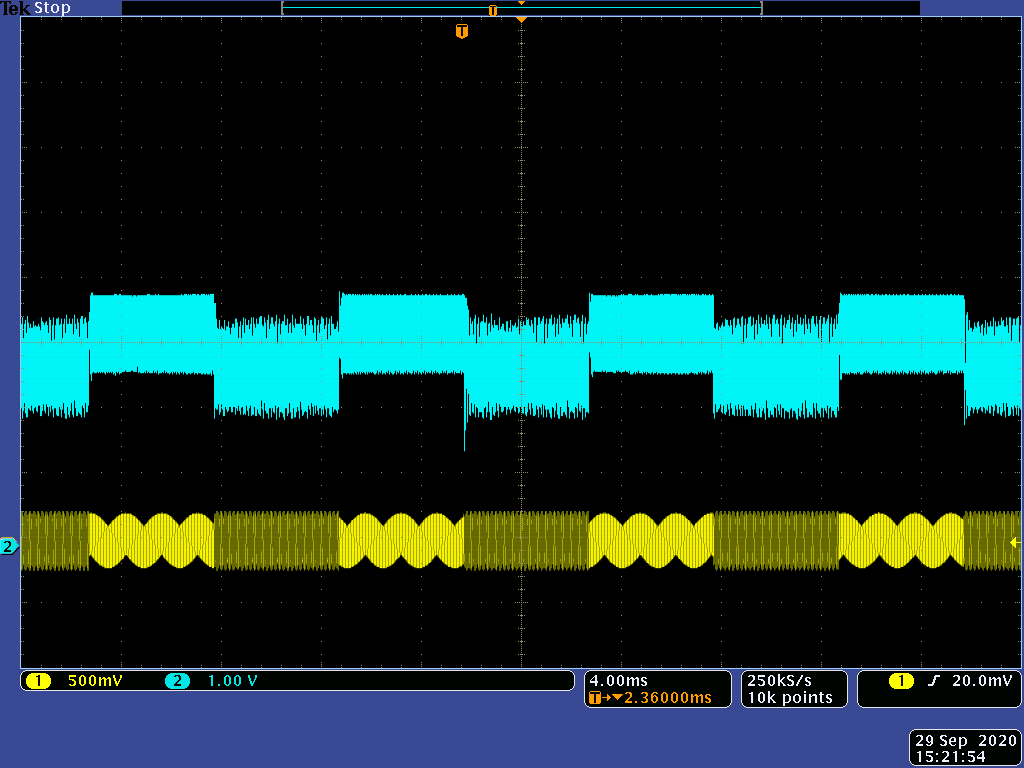Other Parts Discussed in Thread: CD74HC4046A, LMC567
Hi team,
I am posting this on behalf of our customer regarding debugging help for CD54HCT4046A.
Please see their inquiry below:
"We attempted to use the CD54HCT4046 as an alternative to the LMC567 as it is military standard. However, the output is nothing like I anticipated. I used the following paper from TI "Implementation of FSK Modulation and Demodulation using CD74HC4046A". As per the datasheet for CD54HCT4046, I believed the application report could apply to this part.
I need an FSK demodulator with the logic high frequency being 62.5kHz and the logic low frequency being 83.3kHz. From my understanding, the output logic might need to be inverted with a different part but I'm not concerned with that for now. I attached the three designs I attempted as well as the design equations I used."
Here is the output from the DEMOD pin (pin 10). I can see it is locking and creating an output proportional to the input frequency, which is what I expect. However, I expected the DEMOD output to not be sinusoidal or have lower peak-to-peak ripple. Any advice?
Please let me know your questions or comment on the above inquiries.
Thanks,
Jonathan

